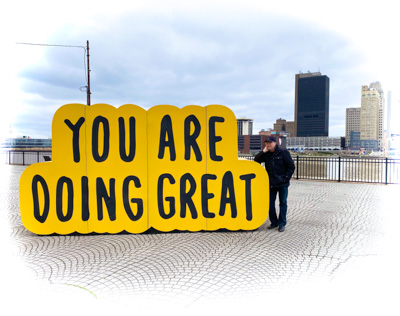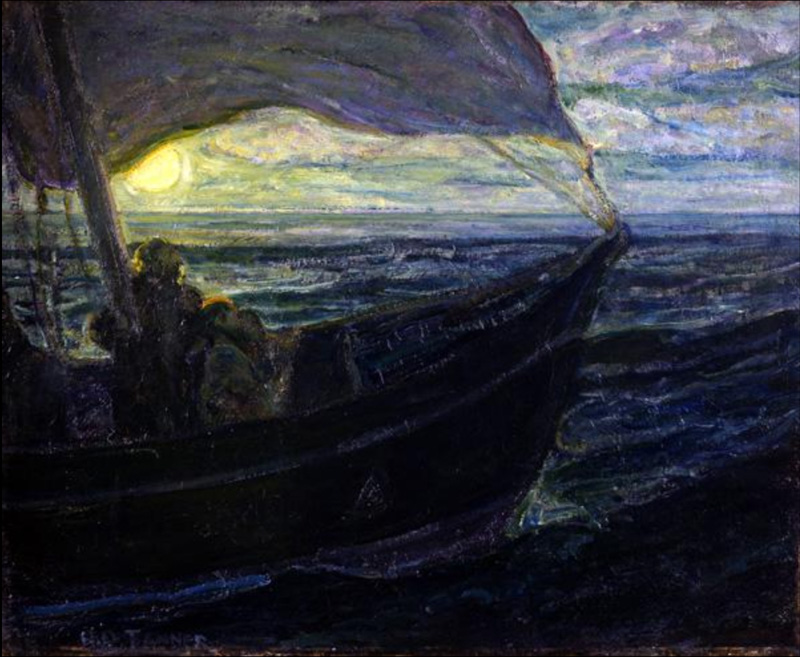Here’s what Toledo Museum’s Belonging and Community Engagement Director Rhonda Sewell said, in regard to the museum’s politically motivated DEAI plan, “What it’s saying is that now we are not only going to look at maybe one ethnicity or one race or one region for art history’s sake in our collection.”
The new museum administrators paint our museum as having been racist. Perhaps that is to justify the radical changes they are making, from the narrowing of the museum’s community focus, to the selling of our famous French Impressionist paintings, and now they report the reinstallation the American gallery in the narrow gallery at the back of the museum, moved from the large elegant American galleries of the west wing (that were endowed by the Barbers.) It seems that the museum founded by the Libbeys for all citizens of Toledo is being dismantled and transformed into something entirely different.  My letter to Michael Bauer, CEO of Libbey, Inc. who is new this year to the Board of Directors of the Toledo Museum of Art.
My letter to Michael Bauer, CEO of Libbey, Inc. who is new this year to the Board of Directors of the Toledo Museum of Art.
March 21, 2023
Dear Mr. Bauer,
As a new board member of the Toledo Museum of Art, I thought you would be interested in my editorial about the Museum that was published in The Blade on Saturday. I’ve attached a clipping for your convenience.
I’ve written to all of the board members several times during last year, but my concerns have never been addressed. I have a website that is pretty detailed about the issues written about in my editorial. artistsoftoledo.com
It’s a shame that these issues need to be brought up. We used to have a wonderful museum that was beyond reproach. It served the entire community, not just a two-mile radius. The Libbeys would not have wanted that, and Mr. Libbey wouldn’t have wanted the paintings sold, diminishing the Museum’s great Impressionist collection to replace his endowment with a new endowment of equal amount, which circumvents the rules he set down for the use of the money and removes him from the picture. The money should have been used to buy art, or it should have been put back into the Libbey Endowment for new purchases of art as soon as possible. The art bought with that money should credit Libbey, not a new endowment.
Our museum had always been for everybody. But today, Adam Levine and Rhonda Sewell (who came to work at the museum with no museum experience, and learned about art museums on the job) have made our museum divisive, using diversity as the excuse.
Rhonda Sewell was quoted in The Blade on October 1, 2022 in regard to the museum’s politically motivated DEAI plan, “What it’s saying is that now we are not only going to look at maybe one ethnicity or one race or one region for art history’s sake in our collection,” yet that is a blatant misrepresentation of the Museum, which has always been one of the most progressive community oriented museums in the country. Funny that the painting they use for promoting their American Art installation, which is by the black artist, Henry Ossawa Tanner, was acquired by the Museum in 1913. But they are quick to erase the Museum’s legacy to paint a false narrative that our Museum has never been diverse.
In response to a survey of museums made by Artnet titled the 2022 Burns Halperin Report, in which the Toledo Museum took part, I made my own survey of the art bought by just the Toledo Museum from 2017 to 2022. My survey is here, The Artists of Toledo Report. It shows an uncanny balance of the percentages of art acquired of American artists by race and sex relative to population percentages of race and sex. In my research of historic Toledo artists, almost all of whom have had a close relationship with the Museum, it shows a good percentage of notable black artists throughout the history of notable local artists, from Frederick Douglass Allen, born in 1886, an early art student of the Museum’s once-great art school who participated in eight Toledo Area Artists Exhibitions including the first one, to Carroll Simms and LeMaxie Glover in the 1940’s and 50’s who got their start at the Museum School of Design and were given scholarships to study at Cranbrook Academy of Art by a wealthy museum patron, Mrs. McKelvy (who donated her French Impressionist paintings in a specially female-curated collection she gave to the citizens of Toledo via the Museum, from which her Renoir was plucked and sold – so much for honoring women), to the “Black Artists of Toledo” exhibitions that the Museum had in the 1970s and 80’s, to the first black board member of the Museum in the 1990s. And that’s not to mention all of the diverse art collected by the Museum throughout the past century including the African collection that was started in the 1950’s, and especially all of the art acquired in the past 20 years, including art bought for the museum by the Apollo Society. I don’t see how anyone can fault our museum for not being diverse.
To now frame the Museum as having been white art only, and then to disenfranchise the community outside of a two-mile radius is terrible. The Museum should be expanding its reach, not shrinking it. Whereas the Museum for many decades educated 2,500 children from all over the city in a Saturday Class program for children who really wanted it, Adam Levine exploits our communal memory of that program by saying he is bursting “out of the walls” building art making stations for 18,000 residents of low-income housing developments and equipping them with art teachers. People still believe that the Museum has that wonderful Saturday children’s classes program, but today it is a mere sliver of what it once was. The Museum is living on a reputation that it can no longer live up to. The Museum’s school should have grown, not shrunk. Here’s my proposal for how the Museum can start to rebuild the school — and do outreach at the same time.
If you think it’s fair to the citizens of Toledo to have taken that away from the general public and funnel most of the Museum’s educational efforts into a government housing project, I’d really like to know your reasoning. If the children’s Saturday class program had not been available to me growing up, I would not be the artist I am today, and that goes for a lot of Toledo artists. I lived five miles away from the Museum and attended Toledo public schools. I went to the Saturday classes for all the years that it was open for me. It helped me have a successful artistic career in New York. I have work in the Art Institute of Chicago, and I have the Toledo Museum to thank. But now that opportunity has been taken away from most of the youth of Toledo.
Thank you for your time. I’d love to hear back from you.


